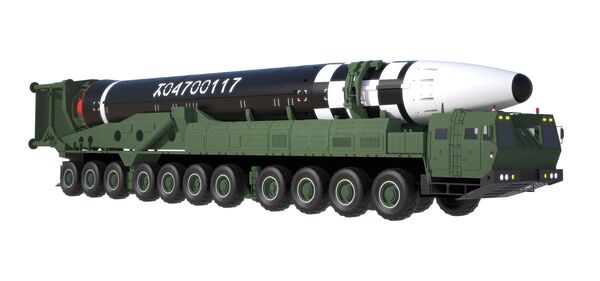
North Korea launched its new Hwaseong-19 ICBM on 31 October using an 11-axle TEL, similar to the TELs from which it launched the Hwaseong-16 and Hwaseong-17 ICBMs in 2022 and 2023. The render above shows the 11-axle TEL carrying the Hwaseong-16. (Nathan J Hunt)
North Korea has confirmed that the intercontinental ballistic missile (ICBM) it test launched on 31 October featured a new weapon known as Hwaseongpho-19 (or Hwaseong-19).
The state-run Korean Central News Agency (KCNA) reported on 1 November that the new ICBM was launched following North Korean leader Kim Jong-un's order to the country's Missile Administration to conduct an “on the spot crucial test” of the missile.
KCNA did not report the location of the launch site. KCNA images of the test launch showed the missile being launched from an 11-axle transporter-erector-launcher (TEL) vehicle. It also showed the missile deep in space before its return to Earth.
Apogee
In the test, KCNA said the Hwaseong-19 reached a maximum altitude of 7,687.5 km and flew a distance of 1,001.2 km for 5,156 seconds (nearly one hour 26 minutes) “before landing on the preset area in the open waters” of the East Sea (Sea of Japan).
These statistics are broadly aligned with those reported by South Korea and Japan, and confirm that the flight of the Hwaseong-19 reached a record high apogee. No other North Korean ICBM has flown as high.
Japan's Ministry of Defense (MoD) said the missile landed in the sea outside Japan's exclusive economic zone (EEZ), about 200 km west of Okushiri Island, which is located about 20 km west of mainland Hokkaido, Japan's northernmost prefecture. South Korea's Joint Chiefs of Staff said the missile was fired at a lofted angle at about 0710 h local time.
Looking to read the full article?
Gain unlimited access to Janes news and more...







